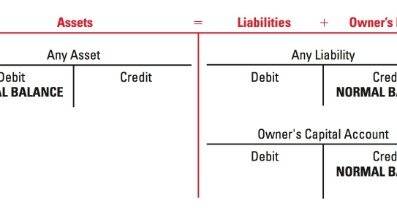
As a business, it is important to ensure that your records are accurate and consistent. Reconciling your accounts can help you achieve this goal by identifying discrepancies and taking appropriate corrective action. Alongside human-based accounting activities, a lot of companies make use of open source accounting software to record transactions and reconcile differences between different statements or documents. The whole account reconciliation process is documented and stored for future audit purposes, with the general ledger reconciliation serving as a necessary process before a company gets to issue its financial statements. This is one very important cause of discrepancies account reconciliation aims to deal with. From the definition, one very clear and important use of account reconciliation is to prevent errors in financial accounting activities.

Automated reconciliation improves the quality and efficiency of account reconciliation by eliminating human error, which is common when you reconcile accounts manually or using a spreadsheet. Automated account reconciliation tools perform reconciliation work with ease and more accuracy in real-time. The document review method involves reviewing existing transactions or documents to make sure that the amount recorded is the amount that was actually spent. Use to identify unreconciled or external bank statement
lines, and create an account for a transaction.
What is a three-way trust reconciliation?
After 60 days, the Federal Trade Commission (FTC) notes, you’ll be liable for “All the money taken from your ATM/debit card account, and possibly more—for example, money in accounts linked to your debit account.” This type of account reconciliation makes it possible to check for errors and detect any possible fraud. Use Reconciliation matching rules to determine how
to match bank statement lines to system transactions. Although these do not occur very often, where they are spotted, you make amendments in the bank account statement, either by additions or subtractions.

Accounts receivable details may not match the general ledger if customer invoices and credits are accrued and not entered individually into the aged accounts receivable journal. Customer account write-offs must be recorded against the Allowance for Doubtful Accounts, which nets against Accounts Receivable in financial statements. Reconciliation ensures that accounting records are accurate, by detecting bookkeeping errors and fraudulent transactions. The differences may sometimes be acceptable due to the timing of payments and deposits, but any unexplained differences may point to potential theft or misuse of funds. For example, the internal record of cash receipts and disbursements can be compared to the bank statement to see if the records agree with each other.
How Reconciliation Works
To carry out this task, businesses usually compare their own data records to external data received through a bank, a customer, or a vendor. For lawyers, reconciliation in accounting is essential for ensuring that financial records are accurate, consistent, and transparent. While proper reconciliation is the standard for how law firms should handle all financial accounts, it is particularly important—and often required—for the management of trust accounts. By catching these differences through reconciliation in accounting, you can resolve discrepancies, help prevent fraud, better ensure the accuracy of financial records, and avoid regulatory compliance issues. It not only allows you to protect your clients’ funds, but your firm too as a result.
- When an account is reconciled, the statement’s transactions should match the account holder’s records.
- This method for account reconciliation involves the use of historical account balance levels to determine the estimated account balance of the statement or accounting record under review.
- Automatic Reconciliation uses the reconciliation
rule set assigned to the bank account to reconcile bank statement
lines and system transactions. - Accounting errors are noted where there is a significant variation from the estimated projection.
- The pressure of SOX is coupled with the perennial need to mitigate erroneous reconciliation in the process.
That’s how we know the financials are accurate — or at least materially correct — every month. According to Investopedia, the definition of account reconciliation is “an accounting process that compares two sets of records to check that figures are correct and in agreement. Account reconciliation also confirms that accounts in the general ledger are consistent, accurate, and complete.” Reconciliation provides a check on the completeness of your financial data. When account reconciliations are incorporated into the month-end closing process, this can delay the completion of the close. Controllers can mitigate this issue by mandating that only accounts with large ending balances be reconciled at the end of each month, thereby reducing the workload while still spotting most account errors.
required. For example, a credit card statement that cuts off on Jan. 3, 2023,
If the indirect method is used, then the cash flow from the operations section is already presented as a reconciliation of the three financial statements. Other reconciliations turn non-GAAP measures, such as earnings before interest, taxes, depreciation, and amortization (EBITDA), into their GAAP-approved counterparts. GAAP requires that if the direct method is used, the company must still reconcile cash flows to the income statement and balance sheet. Some reconciliations are necessary to ensure that cash inflows and outflows concur between the income statement, balance sheet, and cash flow statement. Reconciliation is an accounting procedure that compares two sets of records to check that the figures are correct and in agreement.
Bank reconciliation statements compare transactions from financial records with those on a bank statement. Where there are discrepancies, companies can identify and correct project accounting the source of errors. Reconciling accounts and comparing transactions also helps your accountant produce reliable, accurate, and high-quality financial statements.
Final thoughts on reconciliation accounting
Here, records such as receipts or canceled checks are simply compared with the entries in the general ledger, in a manner similar to personal accounting reconciliations. Using a double-entry accounting system, as shown below, she credits cash for $2,000 and debits her assets, which is the equipment, by the same amount. For her first job, she credits $500 in revenue and debits the same amount for accounts receivable. Reconciling your accounts is not optional due to the necessity for all companies to file annual statements, summarising a year’s worth of transactions accurately. Companies which are audited will have the validity of their financial statements put under greater scrutiny due to the audit process, testing whether they are accurate and free from material misstatement. Account reconciliation software removes the burden of manually performing the task of comparing different account statements.
Reconciliation for individuals
It is prudent to reconcile credit card accounts and checkbooks on a regular basis, for example. This is done by comparing debit card receipts or check copies with a person’s bank statements. After finding evidence for all differences between the bank statement and the cash book, the balances in both records should be equal. You should prepare a bank reconciliation statement that explains the difference between the company’s internal records and the bank account. Next, you check that all incoming funds have been reflected in both your internal records and your bank account statement.
برچسب ها: